A Day in the Life of a Shorebird Steward
By: Cara Franceschini, CWF Summer 2023 Intern
In the May 16th blog, Shorebird Stewards On the Bay in May, it’s mentioned that some beaches along the Delaware Bay have restricted access every year from May 7th to June 7th. This is due to the migratory shorebirds that travel thousands of miles and need a place to stop to feed. Our beaches contain excellent food sources to help birds gain weight to continue their journey- horseshoe crab eggs. They are filled
with fat and protein. The Delaware Bay is the largest spawning area for horseshoe crabs in the world!
Now what do the Shorebird Stewards, such as myself, do all day? We monitor our assigned
beaches and educate the public about this incredible phenomenon! My favorite beaches are
Roosevelt Blvd. beach and Cook’s Beach because I see the most active flocks of shorebirds at
these locations.
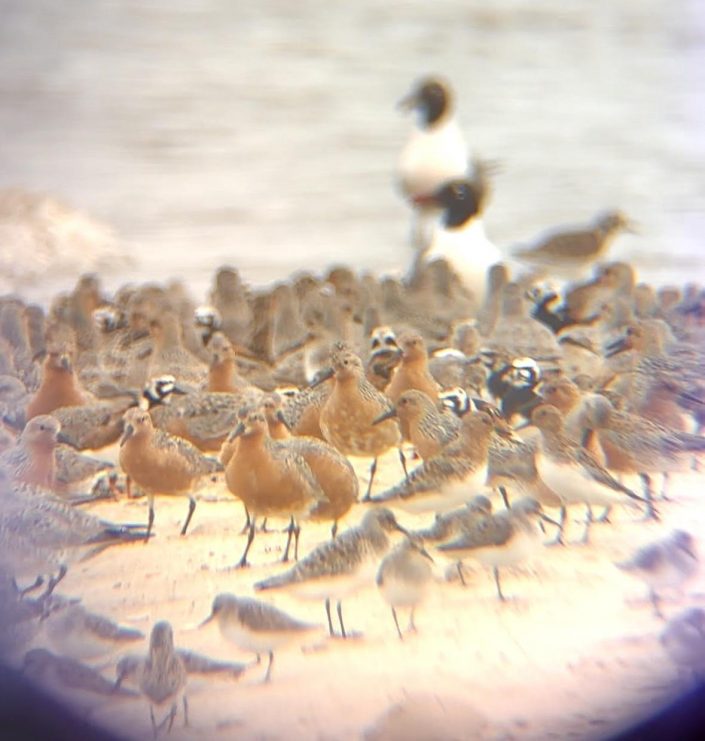
A group of the infamous Red Knots: Calidris canutus, Semipalmated Sandpipers: Calidrus pusilla,
and Ruddy Turnstones: Arenaria interpres, at the beach on Roosevelt Blvd., photo: C. Franceschini
On a quiet day with not many people to educate, there are many things for us Stewards to do.
Some Stewards read their books, watch movies, listen to music/podcasts, color/paint, take
walks, research, etc. I do all of the above! Since we have a love for these special shorebirds,
most Stewards also birdwatch! It’s a must to bring your binoculars or scope to observe these
beautiful birds. Sometimes, you observe other interesting animals, too!
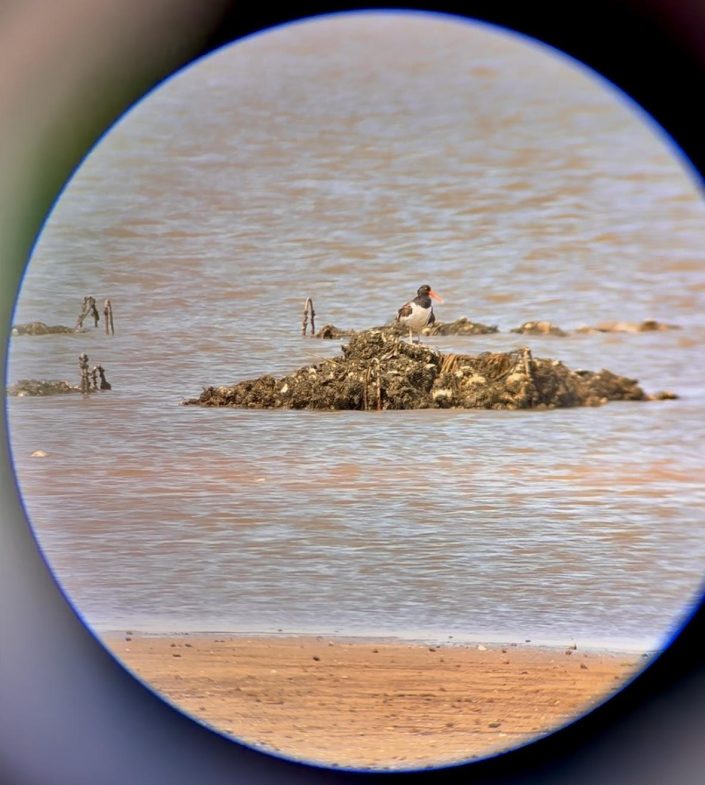
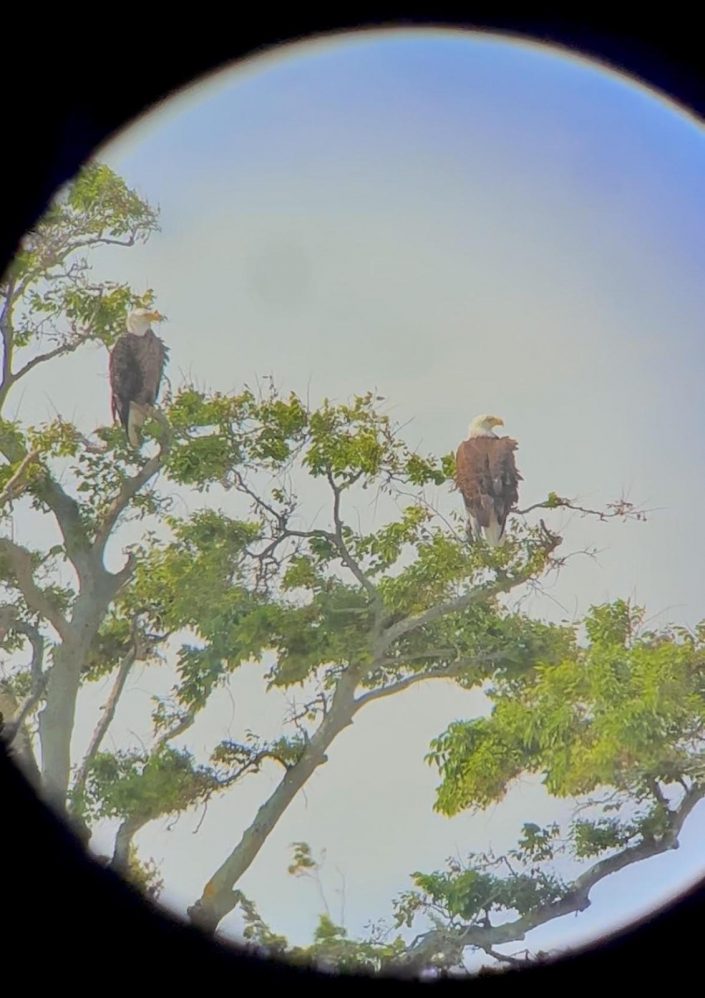
Another activity to do in the down-time is to flip the spawning Atlantic Horseshoe crabs, Limulus
polyphemus, back onto their legs so they can crawl back into the bay. When the tide rise, these
crabs get overturned by the waves and have no way of returning back to their feet! Personally,
this is my favorite activity to do. When you return after your “crab walk”, you get to see the
tracks of their feet traveling back into the bay where they belong. Below on the left is a picture of
flipped and rescued crabs: the one on the left is a male who decided to bury himself in the sand
to preserve water until the tide comes back in, and the one on the right is a male who decided to
make the trek back into the bay. When the tide comes in, the horseshoe crabs come up
and begin spawning. Pictured below in the middle is an example of how crowded the beaches
get with these creatures! On the right, is a photo of a tagged crab I found, and reported it to
the US Fish and Wildlife Service so that they can collect data on the tagged crabs.
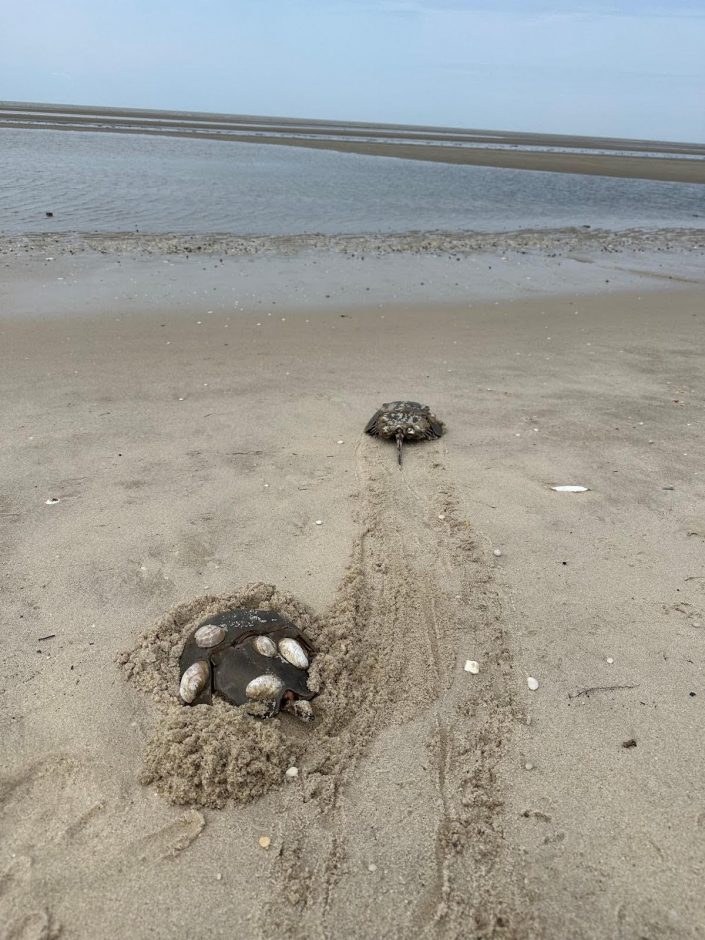


You can also get involved with helping these critters! “Return the Favor” is an organization
dedicated to conducting beach walks to flip overturned horseshoe crabs on the NJ beaches of the Delaware Bay. You can join public walks that are held by walk leaders or sign up to be a volunteer
and conduct your own walk (until July 15th, 2023 or next year). I am a volunteer and walk leader
and it is one of my favorite things to do. Flipping horseshoe crabs is such a special event
because that means you’re saving those crabs so they can continue to spawn and produce eggs
for the shorebirds. With your help, you could help save hundreds of crabs just by flipping
them over! Of course I had to capture this special moment of me flipping a crab (picture below)!
On these walks, you experience much more than just crabs. You get to see other wildlife that
emerges during dusk or dawn. You can also go on the closed beaches to save the crabs that
can’t be rescued during the day. During my walk, I got to see thousands of horseshoe crab
eggs!
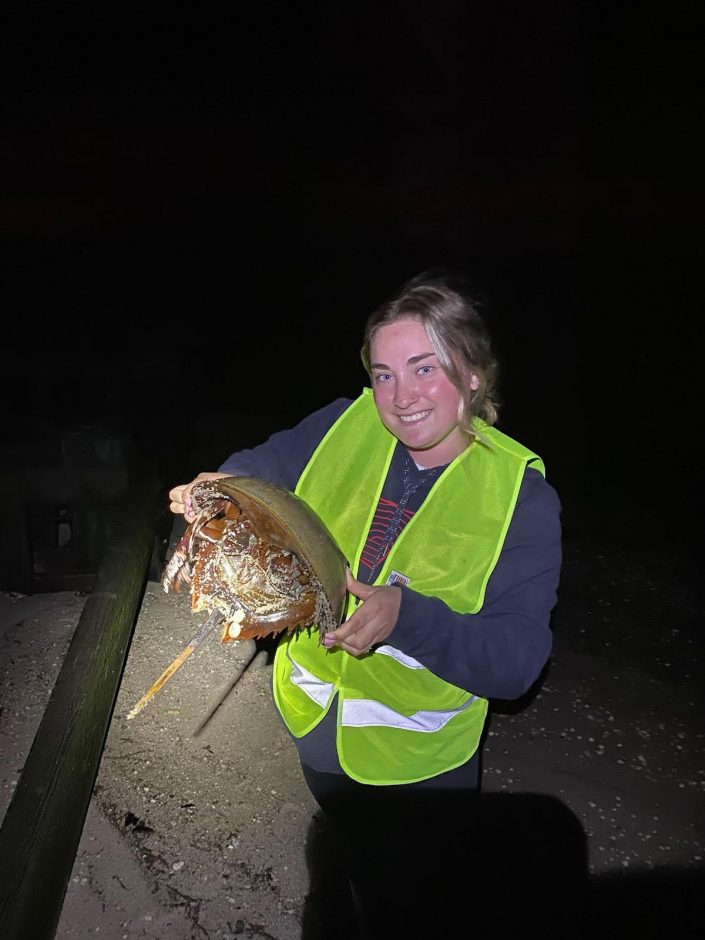
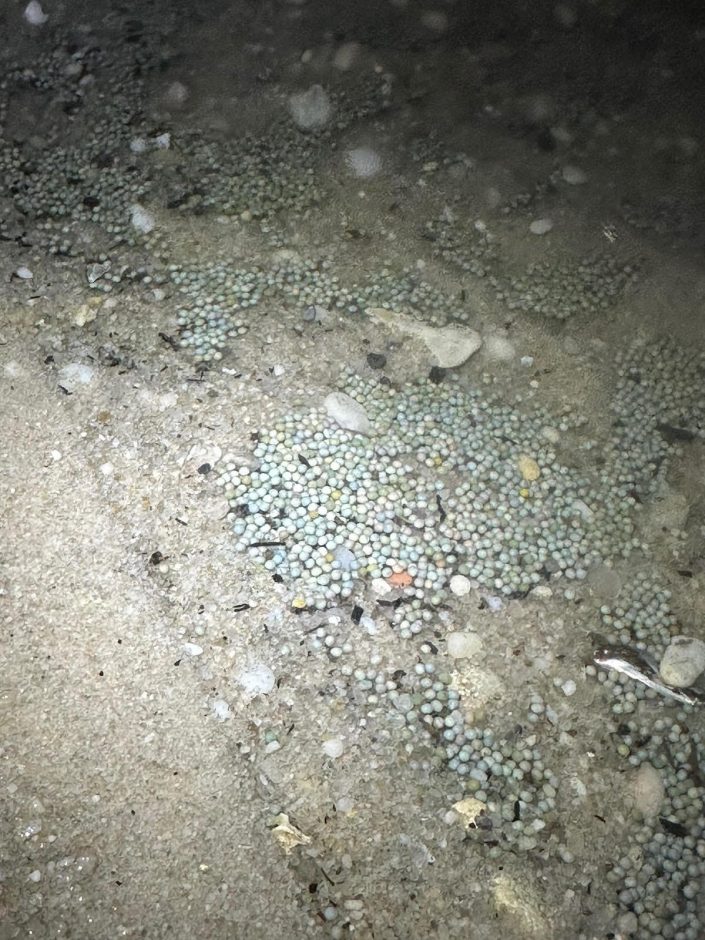
photo: C. Franceschini
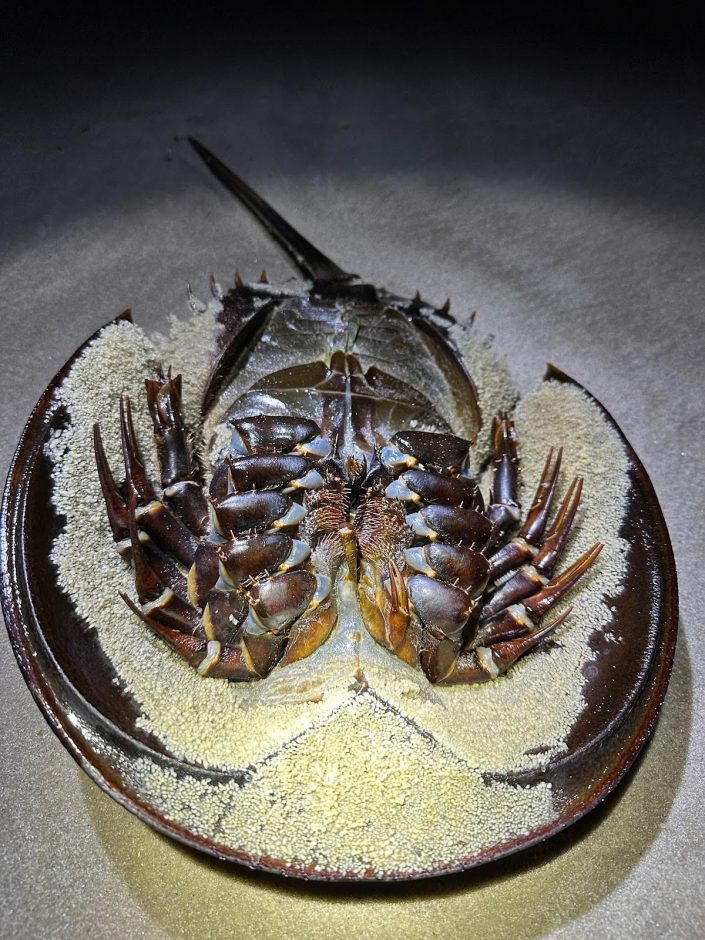
photo: C. Franceschini
Discover more from Conserve Wildlife Foundation of NJ
Subscribe to get the latest posts sent to your email.
Leave a Comment
Wonderful & highly informative article! Keep up the good work Cara! My wife & I have been very fortunate to have been able to witness this marvelous event on many occasions in the past, at Cooks, Kimbles, Reeds, & other Delaware Bayshore sites.
Comments are closed.